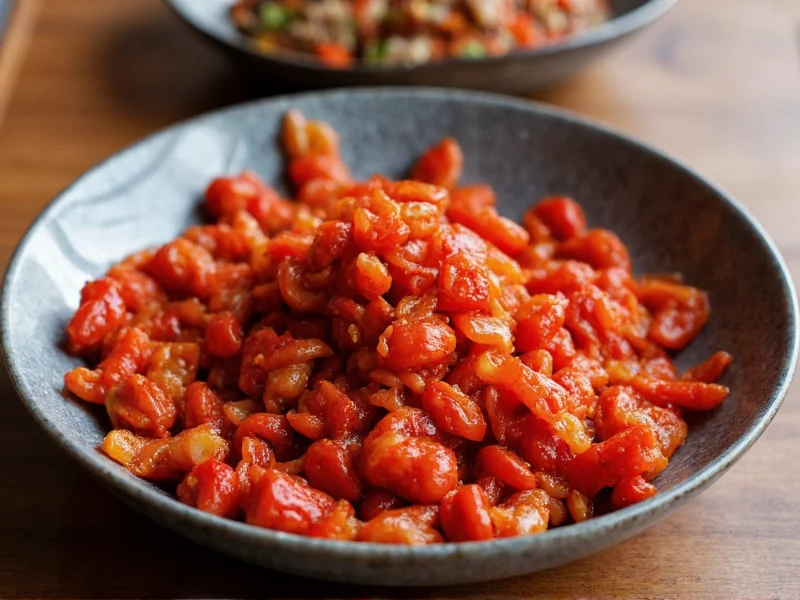When exploring Chinese regional cuisines, few comparisons generate as much confusion as Szechuan versus Hunan. Both represent fiery culinary traditions from China's southwestern regions, yet they offer distinctly different eating experiences that go far beyond simple heat levels. Understanding these differences helps diners make informed choices and appreciate the rich culinary diversity within Chinese food culture.
Flavor Profile Fundamentals
The most fundamental difference lies in their approach to spice. Szechuan cuisine is famous for its mala sensation—a unique combination of ma (numbing) from Szechuan peppercorns and la (spicy) from various chili peppers. This creates a complex sensory experience where the tongue experiences both heat and a tingling numbness.
Hunan cuisine, by contrast, focuses on pure la—intense, direct heat without the numbing component. Hunan chefs rely heavily on fresh red chilies, creating a cleaner, more straightforward spiciness that builds steadily rather than creating the distinctive tingle associated with Szechuan food.
Heat Comparison: Numbing vs. Direct Fire
When examining the difference between Szechuan and Hunan spiciness, consider these key distinctions:
| Characteristic | Szechuan (Sichuan) | Hunan |
|---|---|---|
| Primary Heat Source | Dried chilies, chili oil, Szechuan peppercorns | Fresh red chilies |
| Heat Sensation | Numbing-spicy (mala) | Direct, building heat |
| Heat Level Perception | Often perceived as less hot initially due to numbing effect | Immediate, straightforward heat |
| Flavor Complexity | More complex with sweet, sour, salty elements | Simpler profile emphasizing pure heat |
| Oil Usage | Moderate, often with distinctive red hue | Abundant, creating a glossy appearance |
Signature Ingredients and Techniques
Szechuan cooking frequently employs fermented black beans, garlic, ginger, and doubanjiang (broad bean paste) to create its signature complex flavors. The cuisine often balances heat with sweet, sour, and salty elements, resulting in dishes with multiple flavor dimensions. Famous Szechuan techniques include yu xiang (fish fragrance) seasoning—which paradoxically contains no fish but creates a complex savory profile.
Hunan cuisine relies more heavily on fresh ingredients, particularly various types of fresh red chilies. The region's cooking often features smoked and cured ingredients, reflecting historical preservation methods. Hunan chefs typically use more vinegar than their Szechuan counterparts, creating a sharper, more acidic counterpoint to the intense heat. The cooking style tends to be oilier, with dishes often swimming in chili oil.
Geographical Influences on Regional Cuisines
The environmental conditions of each region significantly shaped their culinary traditions. Szechuan province's humid climate led to the development of the numbing-spicy profile, as both chilies and Szechuan peppercorns were believed to help combat dampness in the body. The region's location along ancient trade routes also introduced diverse ingredients and techniques.
Hunan province, situated along the Yangtze River with abundant rainfall, developed a cuisine emphasizing preservation techniques. The plentiful freshwater resources influenced ingredient selection, while the consistently hot, humid weather encouraged the consumption of intensely spicy foods believed to promote sweating and cooling.
Iconic Dishes That Define Each Cuisine
Understanding the difference between Szechuan and Hunan becomes clearer when examining their signature dishes:
- Szechuan classics: Kung Pao chicken (diced chicken with peanuts and chilies), mapo tofu (spicy tofu with minced meat), dan dan noodles (noodles with spicy sauce)
- Hunan specialties: Steamed fish head with chilies, Chairman Mao's red-braised pork, spicy stir-fried chicken with chilies
While both cuisines feature chili-laden dishes, Szechuan preparations typically show more visible evidence of Szechuan peppercorns (small, reddish-brown husks), while Hunan dishes often display whole or sliced fresh red chilies.
Practical Guidance for Diners
When deciding between Szechuan and Hunan options at a Chinese restaurant, consider these practical differences between Szechuan and Hunan cuisine:
- Choose Szechuan if you enjoy complex flavors with numbing sensations and balanced spice
- Opt for Hunan if you prefer straightforward, intense heat without the tingling effect
- Request "traditional" preparation when possible, as many Westernized Chinese restaurants blend elements of both styles
- Ask about spice levels—Hunan dishes often pack more immediate heat than their Szechuan counterparts
Understanding these distinctions between Szechuan and Hunan cooking techniques enhances your dining experience and helps communicate your preferences to restaurant staff. The next time you're considering Sichuan vs Hunan menu options, you'll be equipped to make a choice that aligns with your taste preferences.











 浙公网安备
33010002000092号
浙公网安备
33010002000092号 浙B2-20120091-4
浙B2-20120091-4